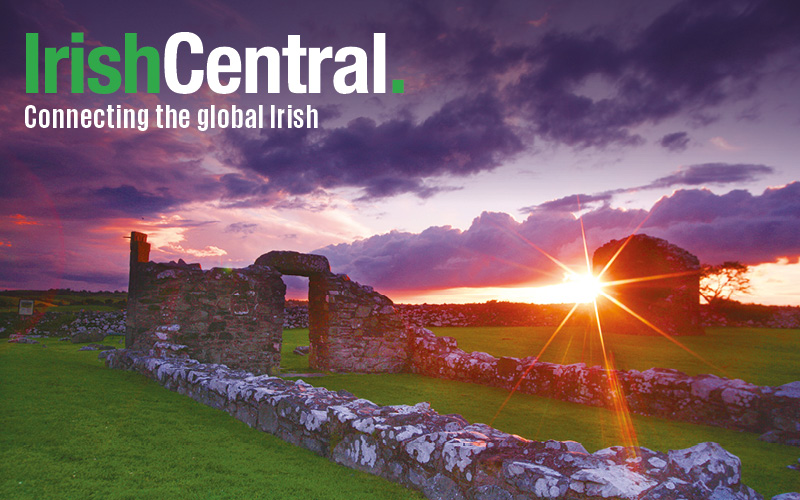An Historical, Environmental and Cultural Atlas of County Donegal
Edited by Jim Mac Laughlin and Sean Beattie
Donegal is often referred to as Ireland in miniature because every major element of the topography of the rest of the country, from low lying bog land to epic mountain ranges, are found there.
But getting to it has always been a bit of a challenge. No trains or motorways take you directly to it, and it doesn’t boast a major airport or seaport. If you visit Donegal at all it’s because you want to.
Because of Donegal’s enduring remoteness and scenic beauty it has been a particular prize for every wide-eyed colonist who ever landed on its shores. The transition from the old Gaelic world to modern times occurred there; the last of old Irish order made their stand or took their leave from history there.
Donegal represents the changes that Ireland endured (it hosts plantation towns) and it also represents its serene continuity (it is home to centuries old Gaeltacht Irish speaking regions).
In their groundbreaking and utterly remarkable study of the county, An Historical, Environmental and Cultural Atlas of County Donegal, authors Mac Laughlin and Beattie have curated a body of scholarship so formidable that it deserves to be called a groundbreaking book.
Featuring interdisciplinary studies by various authors, the book contemplates Donegal’s culture, history, scenic beauty and its national and international reputation as a place like no other.
The story of Ireland is found in its pages, as well as its physical magnificence and its cultural heritage. Ranging from the Stone Age to modern times, the book studies the people who have lived there and the wildlife that makes its home there, aided by lavishly illustrated maps and photographs that make the history of the county leap to life before your eyes.
If you only read or buy one book about Ireland this year, this is the one. The sheer richness and variety of Irish history and culture, assembled so thoughtfully on each page, will dazzle your imagination and fill you with pride in your matchless heritage.
Cork University Press, $82.
Philomena
By Martin Sixsmith
Some stories out of Ireland in the 20th century have the power to freeze the blood in your veins. Philomena, by Martin Sixsmith, is one such tale. Familiar to British and Irish people as a noted journalist, Sixsmith’s interest in this all too Irish tale was prompted by a chance meeting at a party in London with a women who told him a shocking tale.
One Christmas, having had too much sherry, Philomena Lee had broken down and told her shocked family that she had had a child 50 years earlier in Ireland who had been forcibly adopted against her will.
She would never see him again, but she would never stop looking for him either. Partnering with Sixsmith, the unlikely pair began to investigate her lost son’s whereabouts – a job made all the more difficult by Irish government and religious institutions regulations that still make tracing your adoptive child’s location all but impossible.
Lee returned several times to the mothers and babies home in Roscrea, Co. Tipperary that had, it must be said, sold her child to a prosperous American couple. Each time she visited they told her they had no idea where he was now.
The truth was starker. He was buried in the institution’s grounds, having succumbed to AIDS related complications in the 1990s.
The shame of the era in which Philomena lived in the 1950s found an echo in the pain the events that unfolded then still caused her in the present. In this book the author profiles a courageous and funny Irish woman as she tries to make sense of the faith she was taught and the nation that almost took it from her.
This is an important tale, if only insofar as it makes us resolve that it should never happen again. The book is now a major motion picture that’s earning plaudits all over the world.
Penguin, $16.
Scandal Work: James Joyce, the New Journalism, and the Home Rule Newspaper Wars
By Margot Gayle Backus
Irish public figures — writers especially — do seem to love a good sex scandal. But the people who love them even more are opportunistic politicians and the press.
In the late 19th century a new type of scandal sheet was making headway in an era that was bringing the public new types of scandals. Oscar Wilde’s show trial in particular sold as many newspapers as they could print, and his downfall set the tone for each scandal to follow.
Trailblazing Irish political figures could be undone by a whiff of scandal when they proved themselves impervious to every other means. Backus’ book lucidly explores how Wilde’s scandal impacted on the work of James Joyce, informing his modernism and his marked ability to discern the workings of colonialism, political opportunism and a bogus morality, which in turn inspired his own works.
Notre Dame, $37.




Comments